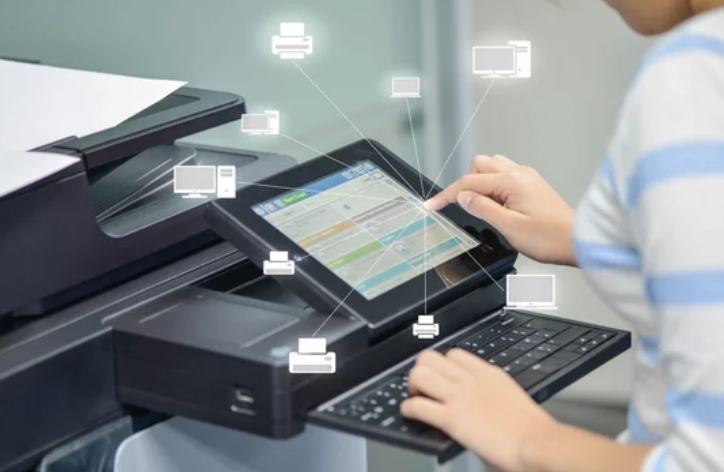When your printer starts producing curled or wrinkled sheets, it can disrupt productivity, waste supplies, and damage print quality. Paper deformities affect both home and office setups, leaving users frustrated—especially when deadlines are tight. In this comprehensive guide, you’ll learn the causes behind paper curling and wrinkling, how to fix these issues quickly, and what preventive steps to take to ensure smooth, flawless printing every time.
Understanding Paper Curling and Wrinkling in Printers
Paper curling and wrinkling occur when physical or environmental conditions compromise the paper’s structure as it travels through the printer. Curling typically appears as edges that lift or roll inward, while wrinkling shows as creases, waves, or folds across the sheet. Both issues are signs of improper handling, moisture imbalance, feeding mechanism faults, or hardware malfunctions.
While these problems may seem minor, ignoring them can lead to repeated jams, poor-quality prints, and unnecessary wear on internal components.
Common Causes of Paper Curling and Wrinkling
To fix the issue effectively, you must understand what triggers it. Below are the most frequent culprits:
1. Moisture-Imbalanced or Old Paper
Paper absorbs moisture from the air. If exposed to high humidity, it becomes limp and curls during printing. In very dry environments, paper loses moisture, leading to static buildup and uneven feeding.
2. Incorrect Paper Type or Weight
Using paper that doesn’t match printer specifications—too thick, too thin, or incompatible coatings—can cause heat misalignment, resulting in curled or wrinkled output.
3. Faulty Rollers or Worn-Out Feed Mechanisms
Feed rollers guide the sheet through the printer. When worn, dirty, or misaligned, they apply uneven pressure that causes paper deformation.
4. Excessive Heat in Laser Printers
Laser printers use fuser units that apply heat to bond toner to paper. Overheating or malfunctioning fusers often lead to severe curling and visible wrinkles.
5. Paper Loaded Incorrectly
Improper stacking, overfilled trays, or tight-edge adjustments force the paper to feed unevenly, creating ridges or creases.
6. Obstructions Inside the Paper Path
Small paper scraps, dust, or debris inside the feed path alter how the sheet moves, causing folds, tears, or wrinkles.
How to Fix Paper Curling Issues Quickly
Curling usually stems from environmental conditions or paper quality. Here’s how to restore clean, flat prints:
1. Condition and Store Paper Properly
- Store paper in a climate-controlled environment.
- Keep unused reams sealed to maintain moisture balance.
- Let new paper adjust to room humidity for several hours before use.
2. Adjust Your Printer’s Paper Settings
Choose the correct paper thickness, type, and finish in the printer’s settings or driver menu. Matching these parameters helps the printer regulate heat and pressure accurately.
3. Flip or Rotate the Paper Stack
Sometimes just flipping the ream can resolve reverse-curl issues, especially with inkjet-printed or pre-used sheets.
4. Reduce Fuser Temperature (Laser Printers)
If your printer allows, adjust the fuser temperature:
- Select “Low Temperature Mode”
- Choose “Reduce Curl” or “Anti-Curl” options if available
Lower heat output minimizes the upward curl caused by high-temperature bonding.
5. Use High-Quality, Printer-Approved Paper
Inferior or incompatible paper reacts poorly to heat and pressure. Opt for brand-recommended or premium-grade sheets designed for your printer type.
How to Fix Wrinkling Problems in Printers
Wrinkling is more hardware-related than curling. If you notice creased or crumpled output, follow these troubleshooting steps:
1. Clean and Inspect the Paper Feed Rollers
Dust and toner buildup reduces gripping power. Clean rollers with:
- A lint-free cloth
- Lightly dampened water (no harsh chemicals)
- Roller-cleaning pages (manufacturer-approved)
Replace rollers if they appear cracked, glazed, or worn out.
2. Check for Debris Inside the Printer
Remove:
- Jammed scraps
- Adhesive residue
- Torn labels
- Dust buildup
Even tiny particles can alter the movement of the paper.
3. Inspect the Fuser Assembly
Wrinkling near the leading edge often indicates a worn or damaged fuser.
Signs of fuser issues:
- Burn marks on paper
- Repeated accordion-style folds
- Uneven heating
If the fuser is worn or broken, replacement is usually necessary.
4. Ensure Proper Tray Alignment
Incorrect tray guides cause the paper to skew. Adjust the guides so they lightly touch the paper stack without squeezing it.
5. Avoid Overfilling the Paper Tray
Too many sheets in the tray increase friction, causing overlapping and inconsistent feeding. Keep the level below the tray’s maximum fill line.
Preventing Paper Curling and Wrinkling: Best Practices
Fixing printing defects is good—but preventing them is even better. Maintain long-term print quality by following these proven habits:
1. Control the Printing Environment
- Ideal humidity: 40–60%
- Ideal temperature: 20–24°C (68–75°F)
Use dehumidifiers in tropical climates and humidifiers in dry locations.
2. Use Manufacturer-Recommended Supplies
Using compatible toners, papers, and components ensures power, pressure, and heat match the machine’s design.
3. Perform Routine Printer Maintenance
Schedule:
- Roller cleaning
- Fuser inspections
- Dust removal
- Firmware updates
Regular care prevents mechanical imbalances that cause wrinkling.
4. Keep Paper Flat and Protected
Always store paper:
- On a flat surface
- In its original packaging
- Away from direct sunlight or heat sources
5. Replace Worn Components Promptly
Rollers, pads, and fusers degrade over time. Timely replacement keeps the print mechanism smooth and reliable.
When to Call a Professional Technician
If you’ve tried all the fixes and the printer still curls or wrinkles paper, you may need expert support. Consider calling a technician when:
- Fuser temperature fluctuates inconsistently
- You see deep creases across multiple sheets
- Rollers appear severely worn or misaligned
- Internal mechanical noises accompany the defect
A professional can inspect internal parts you cannot safely access and diagnose advanced mechanical faults.
Final Thoughts
Paper curling and wrinkling are common but highly solvable printer issues. By understanding the triggers, applying the right fixes, and following preventive maintenance steps, you can maintain flawless print output and extend your printer’s lifespan. With the right paper care, environmental control, and routine servicing, your printer will deliver professional-quality results every time.
Also Read :
